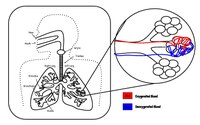
Dominant negative mutation in oxalate transporter SLC26A6 associated with enteric hyperoxaluria and nephrolithiasis
Sign Up to like & getrecommendations! Published in 2022 at "Journal of Medical Genetics"
DOI: 10.1136/jmedgenet-2021-108256
Abstract: Background Nephrolithiasis (NL) is a complex multifactorial disease affecting up to 10%–20% of the human population and causing a significant burden on public health systems worldwide. It results from a combination of environmental and genetic… read more here.
Keywords: enteric hyperoxaluria; slc26a6; oxalate transporter; oxalate ... See more keywords

Enhanced Activity by NKCC1 and Slc26a6 Mediates Acidic pH and Cl− Movement after Cardioplegia-Induced Arrest of db/db Diabetic Heart
Sign Up to like & getrecommendations! Published in 2019 at "Mediators of Inflammation"
DOI: 10.1155/2019/7583760
Abstract: Diabetic heart dysfunctions during cardiac surgeries have revealed several clinical problems associated with ion imbalance. However, the mechanism of ion imbalance mediated by cardioplegia and a diabetic heart is largely unclear. We hypothesized that ion… read more here.
Keywords: heart; diabetic heart; cardioplegia induced; induced arrest ... See more keywords

Cl-/HCO3- Exchanger slc26a6: A pH Regulator Shapes the Cardiac Action Potential.
Sign Up to like & getrecommendations! Published in 2017 at "Circulation: Arrhythmia and Electrophysiology"
DOI: 10.1161/circep.117.005812
Abstract: See Article by Sirish et al Regulation of intracellular pH (pHi) is often considered a housekeeping function, contributing little to cardiac contractile activity. With the study published by Sirish et al1 in this issue of… read more here.
Keywords: exchanger; hco3 exchanger; hco3; slc26a6 ... See more keywords

Novel Human Polymorphisms Define a Key Role for the SLC26A6-STAS Domain in Protection From Ca2+-Oxalate Lithogenesis
Sign Up to like & getrecommendations! Published in 2020 at "Frontiers in Pharmacology"
DOI: 10.3389/fphar.2020.00405
Abstract: Impaired homeostasis of the carboxylic acids oxalate and citrate, dramatically increases the risk for the formation of Ca2+-oxalate kidney stones, which is the most common form of kidney stones in humans. Renal homeostasis of oxalate… read more here.
Keywords: novel human; slc26a6 stas; citrate; stas domain ... See more keywords